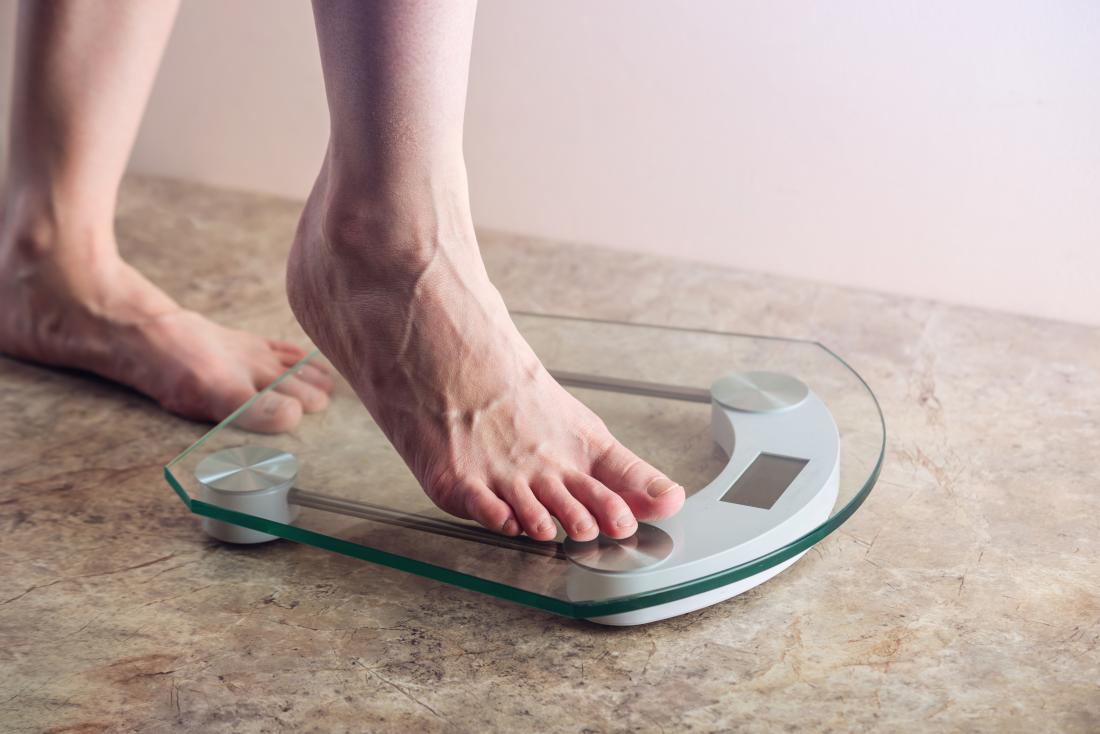Products You May Like
People can become frustrated when they hit a weight loss plateau, which can sometimes cause them to abandon their weight loss plan.
Most people are aware that weight loss requires them to burn more calories than they eat. However, many other factors also influence weight loss, including behavioral, hormonal, and environmental conditions.
Keep reading to learn more about why weight loss plateaus happen and what people can do to break through them.
Why do plateaus happen?
A person may experience a weight loss plateau because their metabolism has slowed down.
When a person reaches a weight loss plateau, they will no longer lose any weight, despite following a diet and fitness regimen. Research shows that weight loss plateaus happen after about 6 months of following a low calorie diet.
Doctors are unsure why weight loss plateaus occur, but some theories include:
- the body adapts to weight loss and defends itself against further weight loss
- people stop following their diets after a few months
- the metabolism slows down if a person loses weight quickly
However, the researchers behind a study on this issue concluded that although a person’s metabolism can change as they lose weight, this does not explain why the weight loss plateau occurs. They believe that the weight loss plateau happens due to a person no longer adhering to their diet plan.
Sticking to a restrictive or low calorie diet plan every day can be challenging or, sometimes, unrealistic. Small, unconscious fluctuations in daily calories can cause early weight loss plateaus.
More research is necessary to determine why weight loss plateaus occur. Below, we cover some ways to break through them.
Start a food journal
Recording meals and snacks can be tedious, but it can provide valuable insights.
Research shows that people tend to underestimate their energy or calorie intake significantly. Once people are fully aware of their eating and drinking patterns and understand where unnecessary calories are coming from, they can make changes.
The authors of an earlier study found that more than 50% of the participants underreported what they were eating. These participants had:
- higher body mass index (BMI)
- increased fat mass
- more visceral fat
- greater perceived stress levels
- a higher percentage of energy from protein
- lower levels of calcium, fiber, iron, vitamin B-1, and vitamin B-6
- fewer servings of fruits and vegetables
Keeping a food diary or using a food tracker app can help people see exactly how many calories they are consuming.
Some trackers even show whether people are getting enough or too much of one particular macronutrient, such as carbohydrate or fat.
Limiting or avoiding the intake of alcohol and sugary treats can help eliminate empty calories that do not provide nutritional value.
Increase exercise frequency or intensity

A person may be able to break through a weight loss plateau by making small, progressive changes to their activity levels.
Exercise helps people maintain weight and build muscle, which can improve metabolism. How much exercise a person requires depends on many factors, including their weight and age.
The Physical Activity Guidelines for Americans recommend that adults do at least 150–300 minutes every week of moderate intensity exercise or 75–150 minutes of vigorous intensity activity.
Many people need more than 150 minutes of moderate exercise per week to maintain their body weight.
People who engage in more than 300 minutes of moderate physical activity every week and perform muscle strengthening activity of moderate intensity can experience additional benefits.
When a person starts dieting and exercising, their fitness level will improve. Over time, they may reach a certain level of fitness that allows them to progress to higher levels of activity. Throughout a person’s weight loss journey, they may need to adjust the intensity of their workout to continue to see results.
Introducing small, progressive changes in activity level can help people break through a weight loss plateau.
Reduce stress
Studies have shown that reducing stress levels can help people lose weight.
In one study, researchers followed two groups of people with obesity. One group received advice on a healthful lifestyle and participated in a stress management program, and the second group only received the advice.
The participants in the stress management group experienced a more significant reduction in BMI than those in the control group.
The stress management strategies in the study included:
- diaphragmatic breathing
- progressive muscle relaxation
- guided visualization
Get a good sleep
A study that featured in the International Journal of Obesity found that sleeping for the same number of hours — and an adequate number of hours — improved weight loss outcomes.
People who slept for less than 6 hours a night had smaller changes in waist circumference compared with people who slept for 7–9 hours.
Improving sleep duration and quality may allow someone to break through a weight loss plateau.
Eat more fiber
Researchers have shown that people in the United States eat only about half of the daily fiber recommendation. People who follow low carbohydrate diets are eating even less fiber.
Fruits, vegetables, whole grains, and legumes are all rich in fiber and may be helpful for people who have reached a weight loss plateau.
Making small changes, such as replacing a daily glass of juice with a whole fruit, can help a person increase their fiber intake.
Eat more vegetables

Introducing more vegetables to the diet may help reduce the urge to overeat.
Many people do not consume enough vegetables on a regular basis. Vegetables are generally low calorie foods that can help people reduce their overall energy intake.
A 2018 review of studies found moderate-quality evidence that consuming more vegetables reduced the risk of weight gain and obesity.
The authors also noted that diets high in fruits and vegetables could lower people’s risk of preventable diseases.
Vegetables are high in fiber and water content, which may help people feel full and reduce the urge to overeat or eat foods with fewer nutrients.
Diets containing plenty of vegetables may be easier to follow because they encourage the higher consumption of specific foods rather than the restriction of certain types of food.
Summary
Hitting a weight loss plateau can be discouraging, but a person can often adapt their diet or fitness routine to continue to lose weight.
Recording their daily calorie intake can help people identify dietary issues, while increasing exercise intensity may challenge their body and help them burn more calories.
Getting enough sleep and reducing stress levels can also help a person break through a weight loss plateau.
Anyone who feels as though they have hit a weight loss plateau may wish to speak with a dietitian, certified personal trainer, or doctor.
